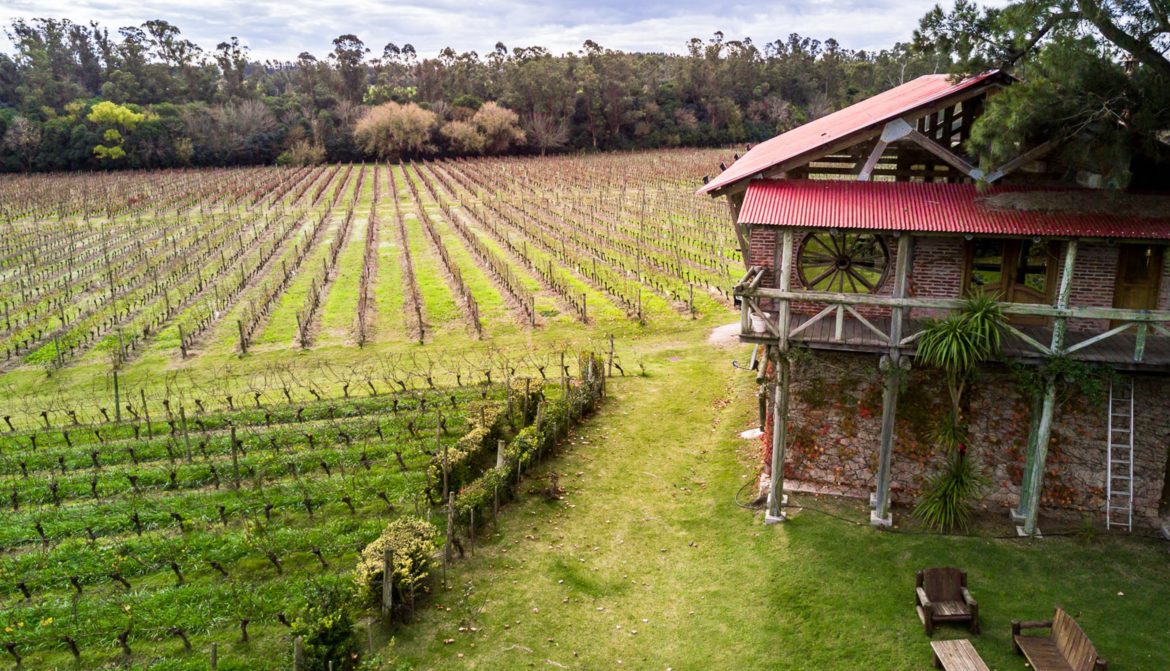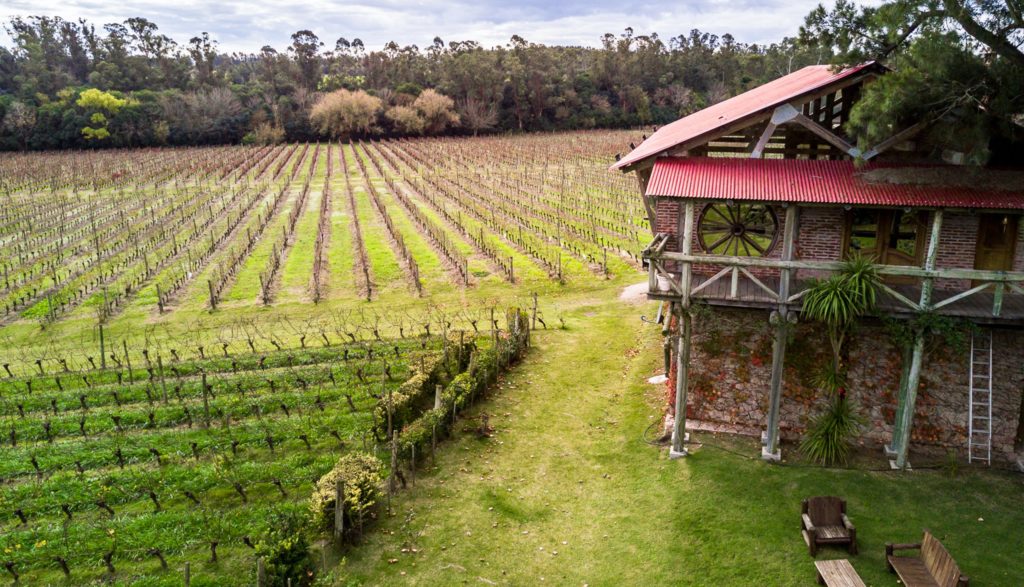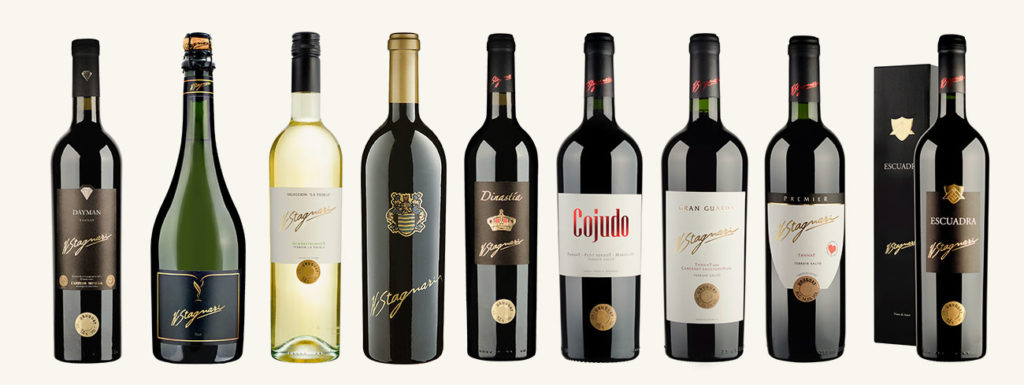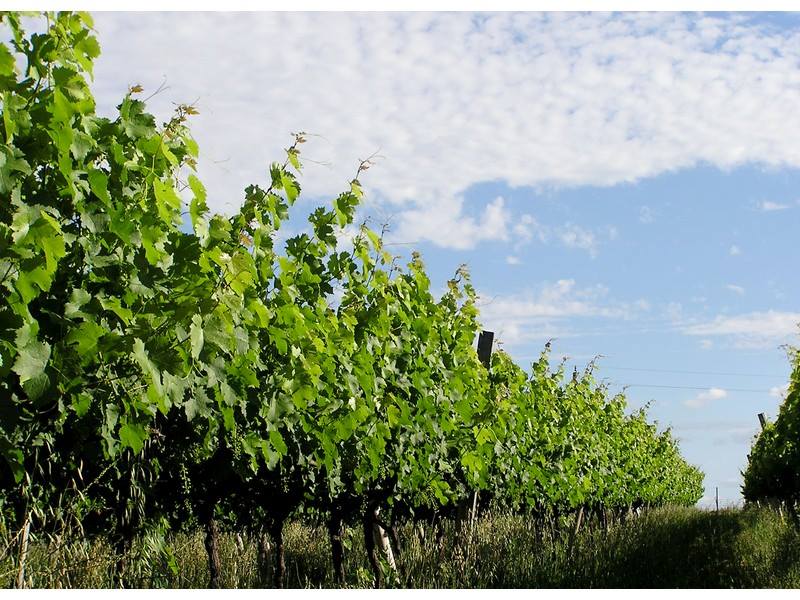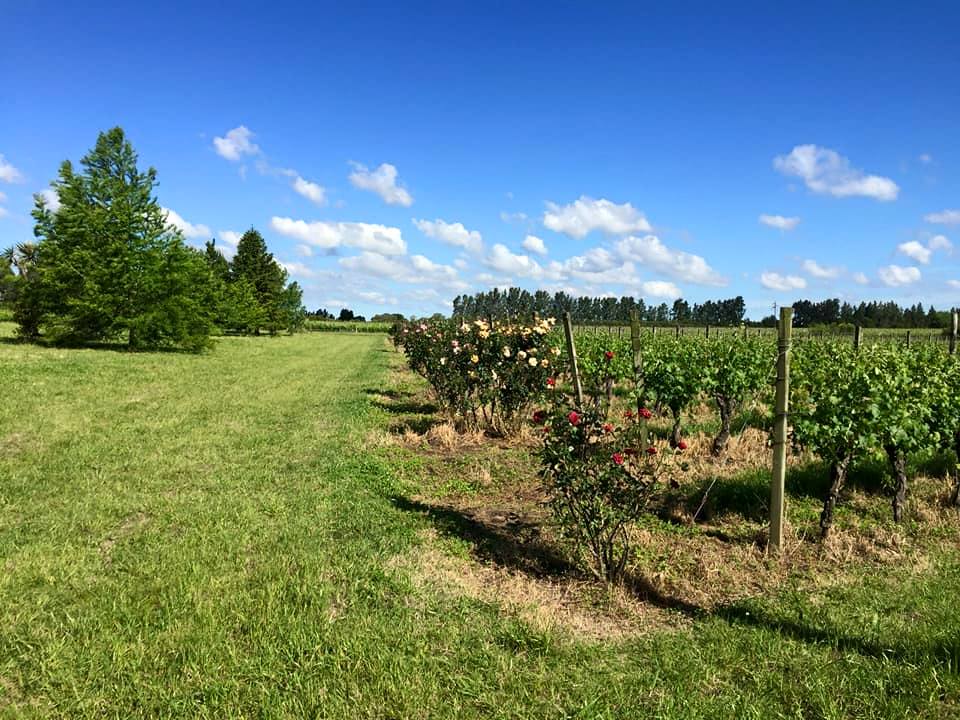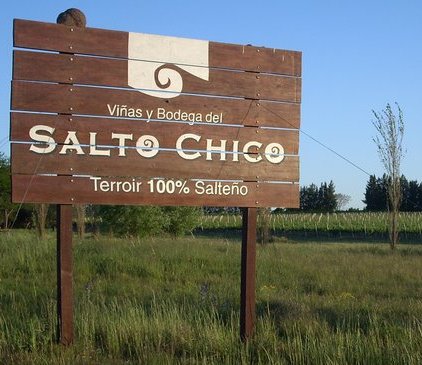Wineries in Rivera, Durazno and the rest of Uruguay. A complete guide to wineries in Uruguay and our Latin American wine guide.
H Stagnari
H Stagnari winery is a historic family producer based in La Puebla in La Paz, Canelones but with vineyards also in the far north of Uruguay, in Salto.
About H Stagnari winery
The family estate was first established in 1890, and the winery was built and added by Héctor Stagnari and his wife Virginia Moreira in 2000 with state-of-the-art technology to focus on premium wine production.
The winery has a capacity of 600,000 litres and an underground cellar which is ideal for storing barrels and wines in perfect conditions. Although the winery has vineyards in both Salto and Canelones, all of the wine is made here on the estate.
About H Stagnari vineyards
La Puebla, La Paz, Canelones
The main vineyard for H Stagnari’s white wines is in La Puebla in La Paz in Canelones. Not far from the capital of Montevideo, the vineyard has a significant maritime influence and is planted with 10 hectares of vines with a focus on Chardonnay, Viognier and Gewurztraminer.
La Caballada, Salto
In northern Uruguay, the family’s 38-hectare La Caballada vineyard in Salto is where H Stagnari grows its red grapes because this warmer region offers good conditions for full ripeness of grapes. The grapes are all hand picked and then transported to the winery in Canelones where a selection of bunches is made before they go into the winery. Most of the red wines are vinified in stainless steel tank before being aged in French oak for at least a year.
Salto is a very important region historically for Uruguay as it was where Pascual Harriague planted his 200 hectare vineyard of Tannat in the 1870s, which made the variety famous in Uruguay. In this same region in La Caballada, the beautiful Dayman river is also well known for its healing properties in the thermal waters.
The Stagnari family, like Harriague, also chose to plant their Tannat and red grapevines there in Salto because of the combination of soil and climate. In La Caballada, the vineyards have a sandy clay topsoil and below there is a really deep soil of rolling stones and gravel, which offers great drainage and allows the roots to explore at great depth. Here they have mainly planted Tannat and Cabernet Sauvignon, which are well suited to the warmer continental climate, which can typically have daytime temperatures up to 40C and night time temperatures below 20C, giving great thermal amplitude and concentration to the wines. The vines are planted at high density (10,000 plants per hectare) in keep yields low and grapes concentrated.
About H Stagnari wines
Overseen by Héctor Stagnari in every aspect, from the vineyard through to the hand-labelling of the wines, H Stagnari’s portfolio reflects the family’s philosophy and commitment to their two terroirs, in Salto and Canelones.
PREMIER
The first line of wines, Premier, is the everyday range which includes Cabernet Franc, Cabernet Sauvignon, Merlot, Tannat and Viognier.
AMANECERES
The next line is Amaneceres, which focuses on the terroir expression for each vineyard and variety, including red varieties from La Caballada and a Chardonnay from La Puebla. Within the line there are also two blends of four varieties, Amaneceres del Daymán, which includes Marselan, Cabernet Sauvignon, Syrah and Merlot, and a Tannat, Petit Verdot, Cabernet Franc and Viognier.
SELECCIÓN LA PUEBLA
Selección La Puebla is a line focused on the varieties grown in La Puebla in Canelones with wines including Cabernet Franc, Gewurztraminer, Marselan, Petit Verdot and Syrah.
RESERVA DE LA FAMILIA
Reserva de la Familia is a limited-edition wine made from a single barrel, with less than 300 bottles released. It is a blend of Tannat (85%) and Cabernet Sauvignon (15%).
BLUE-BLUSH
A rather unusual wine in the line up is Blue-Blush: a rosé made from Moscatel de Alejandria with a touch of Tannat, giving the wine fruity aromas and a blue hue. El Blue is another rosé blend of white and red varieties, made by Héctor and his son Renzo, with Gewurztraminer, Viognier, Chardonnay and Pinot Noir.
PRIMER VIÑEDO
At the top of the range are: Primer Viñedo from the family’s vineyards in Salto, with two releases at the moment, a Cabernet Sauvignon and a Tannat; Dayman; Dinastía; Escuadra, Cojudo, Compás, and Tannat Viejo. Tannat Viejo in particular can claim to be one of the most-prized Tannat wines in the world, with 62 gold medals to its name.
TANNATUR
Tannatur highlights the family’s commitment to making wines in the most natural way possible and is a no-added sulfite wine.
SPARKLING WINES
The family also has a couple of sparkling wines including Brut and Punto G, made in the traditional method with Viognier and Chardonnay.
About the winemaker, Héctor Stagnari
Having studied in Uruguay and worked harvests in Napa Valley, Héctor started making fine wines at his family winery in 1986 by planting French clones of Tannat in a select lot. From an early age he believed in the conversion to fine wines, and he formed Bodega H Stagnari with this goal in mind.
Together with his wife Virginia Moreira, they both take charge of every aspect of wine production and the winery – from marketing and tourism through to winemaking and bottling.
Visiting H Stagnari winery
You can visit the family winery for a tasting and tour Monday through Saturday and if you book in advance you can enjoy a home cooked meal with the family. One of the favourite experiences is H Stagnari’s five-course Meat & Tannat Experience which includes a wine pairing for different meat-based dishes including pork, hare, lamb and beef, and finishes on a sweet note with a chocolate dessert. Within the experience you get to taste some of the winery’s most iconic Tannat wines: Gran Guarda, Primer Viñedo 1×1, Tannat Viejo, Dayman and TNT.
Another interesting five-course tasting experience is the Madiran and Saint Emilion experience, with a diverse menu paired with a range of grape varieties including Marselan, Chardonnay, Merlot and Syrah. Or you can simply enjoy a plate of cheese with wine tasting.
As they are all private and personalised experiences, you have to book in advance.
